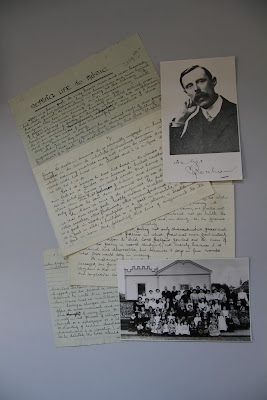The aim with most exhibitions is to appear effortless, as if artworks, text panels and display shelves simply appeared on the gallery walls. The many hours of hard work put in to achieve this result can therefore remain hidden. This post offers a glimpse behind-the-scenes at the installation of Bringing it Home, which has just opened at the Hocken Gallery and celebrates the centenary of the Home Science/Consumer and Applied Science department at the University of Otago.
Jane Malthus, one of the curators for the exhibition, here finishes the work of designer Ryan Gallagher and pins the last of 500 student ID photos to the wall. Each had been individually scanned from originals, printed, trimmed and pinned to create an impressive grid of faces, an artistic installation in itself.
In a first for the Hocken, we now have a kitchen installed in the gallery! While it appears to have been lifted straight out of a 1960s-era home, it was in fact built from scratch by Bill Ingram, Design Studies’ expert technician, and curator Michael Findlay. Having figured out the logistics of mounting the life-sized (and ‘life-weight’) cabinets, they were then filled with kitchen items of the 60s and 70s (kindly lent by the Consumer Food Science department and Michael Findlay).
These are just a few aspects of this fascinating exhibition, that also includes original clothing items made by students, Tom Esplin’s lecture slides for his art appreciation lectures, film footage from 1961, Design Studies technical equipment dating back to 1987, graduate profiles, photographs and more!
Come and enjoy the show, on until 5 March upstairs in the Hocken Gallery. Blog post prepared by Lucy Clark, Registrar.









